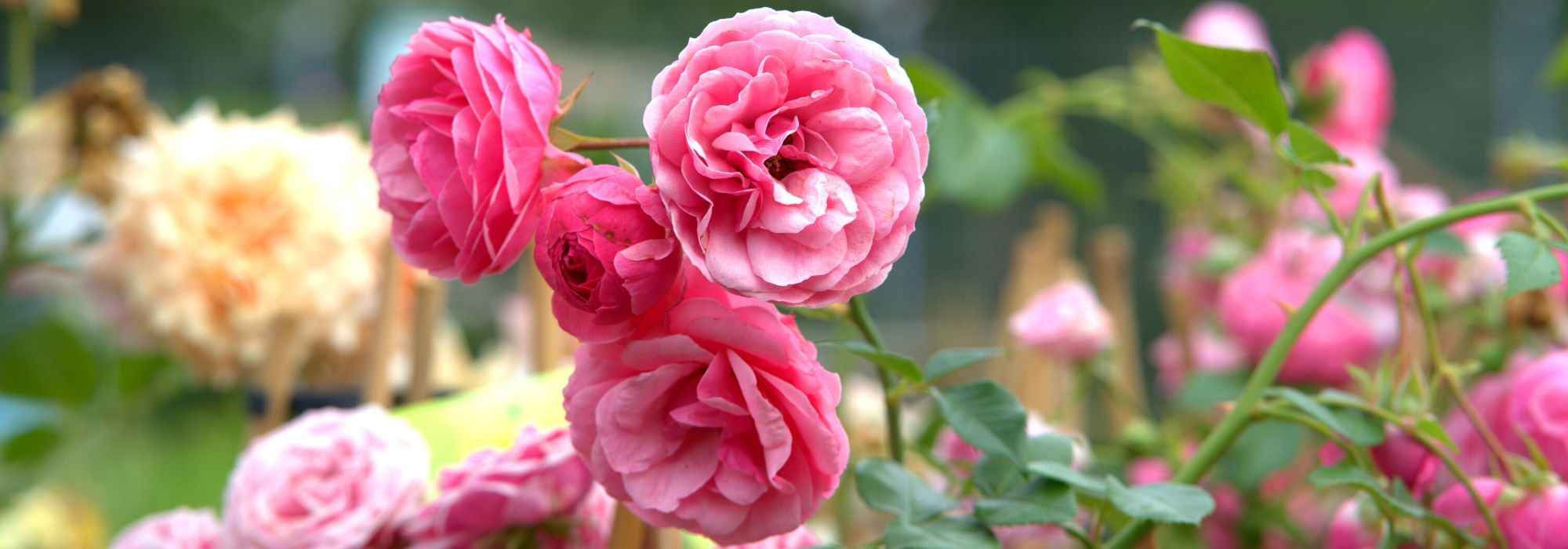
10 summer-flowering bushes you should have in your garden!
Discover our selection
Contents
summer-flowering bushes enliven and colour gardens in summer. They delight with their colourful flowering, whose sweet scent irresistibly attracts pollinating insects!
While many plants often take a break in summer, sensibly slowing their pace in the heat, others flower continuously!
With exotic or classic flowering, these bushes are perfect in full sun or partial shade, in hedges, in borders, as specimens, and also in pots on the patio for the smaller ones.
To help you make the right choice, we have selected 10 remarkable summer-flowering bushes. Discover them!
Butterfly bush or Buddleia
In category bush that flowers all summer, Buddleia, Buddleja davidii in Latin, is a must-have. This attractive flowering bush, whose sweet scent irresistibly attracts many butterflies — hence common name butterfly bush — is easy to grow and hardy, tolerating poor, dry and calcareous soil. It only needs well-drained soil and full afternoon sun to perform at its best. Its flowering in long, scented, coloured clusters can reoccur from July to September. There are varieties ranging from pink to red, white, blue or purple. It can self-seed in gardens, sometimes becoming invasive in fallow land. Today, modern compact sterile varieties are non-invasive, such as the Chip series: ‘Blue Chip’, ‘White Chip’, ‘Lilac Chip’. By the way, I invite you to read Olivier’s article: Invasive, dangerous for butterflies… Should we really be afraid of Buddleia?
Among reliable choices, ‘Pink Delight’ and ‘Peacock’ produce pink spikes, ‘Royal Red’ and ‘Miss Ruby’, more compact, offer a brilliant red flowering, ‘White Profusion’ and ‘White Ball’ produce pure white flowers, and finally ‘Black Knight’ displays the deepest purple.
Use them in hedges or borders. Compact varieties can be planted in containers.
Discover full guide dedicated to it: “Buddleia, Butterfly Bush: planting, pruning, care”
Read also
Pruning of summer-flowering bushesRose bush
Among summer-flowering bushes that delight us: roses! Clustered roses such as ‘Amber Queen’, ‘Iceberg’, ‘Red Leonardo da Vinci’ or ‘Utopia’ are perfect for beds. Large-flowered roses are ideal for arranging bouquets: ‘Borneo Odore’ has peony-like flowers with an exquisite scent, ‘Claude Brasseur’ bears large mauve-pink blooms and an exceptional scent, ‘Double Delight’ offers red-and-white roses with a powerful scent, ‘Château de Cheverny’ provides very fragrant flowering in a soft saffron yellow, ‘Camille Pissaro’ is tricolour. Groundcover roses such as ‘Lavender Dream’, ‘Emera’ and ‘Opalia’ are perfect at front of beds, borders, banks, on top of low walls or in tubs and are pruned with shears!
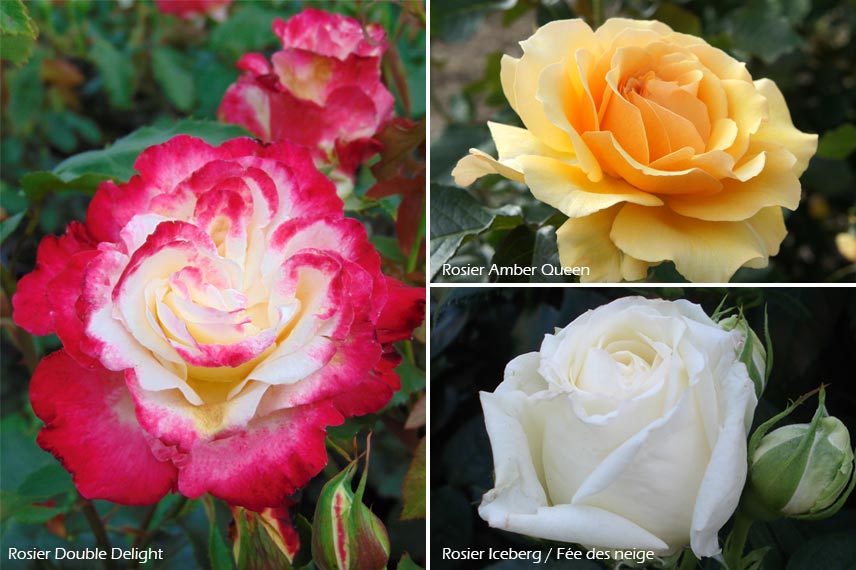
Rose is essential to bring flowering and colour to garden in summer. It can start flowering as early as May and perpetual varieties will flower until arrival of autumn, even until frosts! Water them at the base in dry weather to support flowering and preferably enrich soil each autumn. Diseases such as black spot, powdery mildew and aphids need monitoring. Some varieties such as ADR roses have been awarded for their exceptional disease resistance.
Discover our complete dossier “Roses: best varieties and how to grow them” as well as our buying guide: “Roses: which variety to choose?”
Discover other Summer-flowering shrubs
View all →Available in 0 sizes
Available in 1 sizes
Available in 1 sizes
Available in 1 sizes
Available in 1 sizes
Available in 1 sizes
Available in 2 sizes
Available in 1 sizes
Available in 1 sizes
Available in 1 sizes
Garden hibiscus or Althea
Hibiscus syriacus or garden althaea is a sturdy flowering bush with long, generous flowering. It bears single or double flowers throughout summer, delicately crumpled according to varieties, ranging from white to violet. They are abundant in July, rebloom in August and flower again from late summer into early autumn. It tolerates dry spells though it appreciates a little deep moisture. Plant in full sun, preferably in partial shade in warm regions, as hedge, in border or planted alone. ‘Oiseau Bleu’ with its azure flowers is the most famous variety, ‘Magenta Chiffon’ displays a double crumpled centre, ‘Starburst Chiffon’ is unique with its crumpled pink centre. French Cabaret stand out for original, very double pompom flowers. ‘Rose Moon’ is remarkable for exceptionally large flowers, 17 cm in diameter!
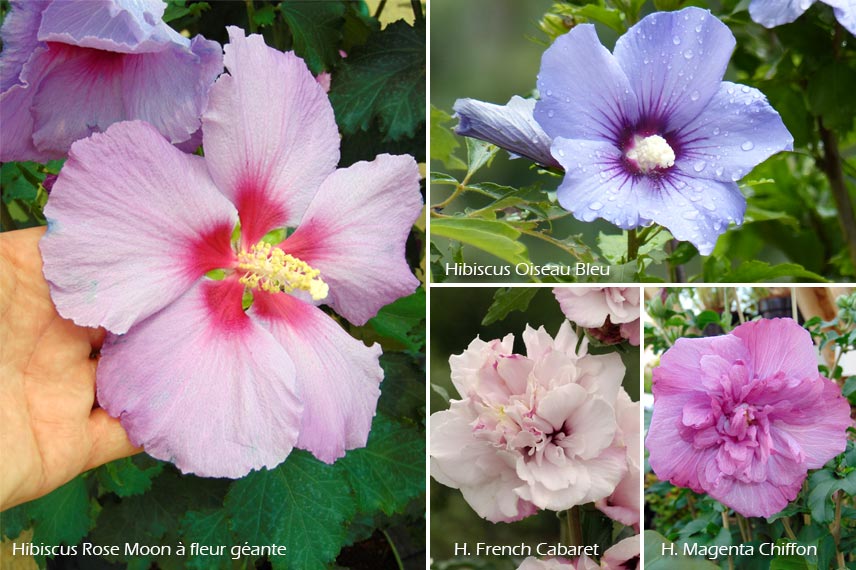
Discover our complete guide: “Hibiscus, althaea: to plant, to grow and to maintain”
Hydrangea, Hydrangea
Classic Hydrangea or Hydrangea macrophylla is among the most beautiful bushes in flower in summer and declinate into a variety of colours and forms. It prefers acidic to neutral soil, with very little or no lime. Ensure watering during dry spells and enrich soil. Place in partial shade in warm regions and rather in sun in temperate climate. It can be paired with ericaceous plants, planted in a bed, in a container, as a specimen, or formed into a rounded hedge.
With the famous mophead hydrangea, choose ‘You & Me Together’ for very double pink and green inflorescences, ‘Endless Summer’ belongs to a series with extremely perpetual-flowering, ‘Hovaria Hopcorn’ has unusual lilac florets. ‘Leuchtfeuer’ with red-pink flowering and ‘Bodensee’ in an astonishing blue are good classics.
Flat-flowered hydrangeas, called « Teller » from German meaning « plate », are distinctive. Among them, ‘Blaumeise’ is a reliable choice, ‘Stargazer’ presents double florets, ‘Zorro’, an astonishing black wood, ‘Wedding Gown’ with very double white florets and ‘Tricolor’, with bright variegated foliage.
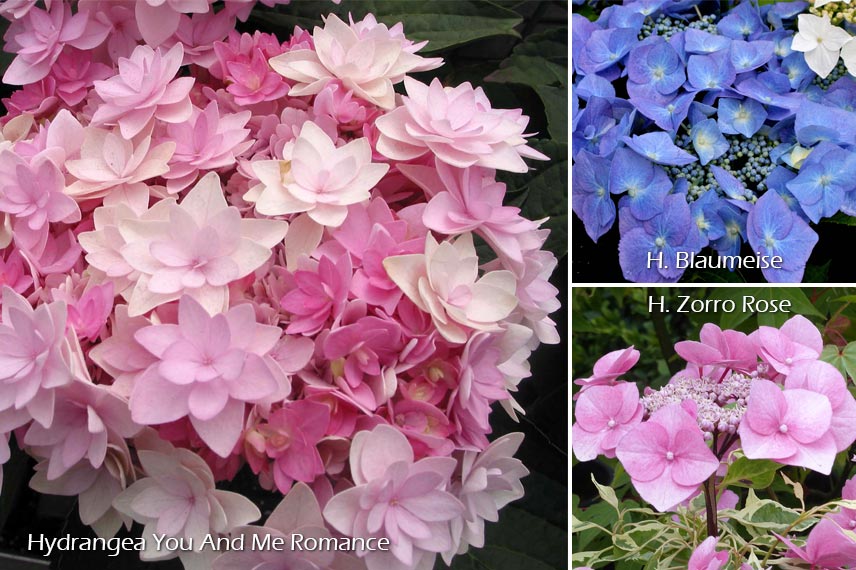
Discover our dossier dedicated to it: “Hydrangea: planting, pruning and care”
St John's wort, Hypericum
Shrubby St John’s wort is another flowering bush throughout summer. Easy, robust, hardy, it thrives in any reasonably well-drained soil, tolerates dry and calcareous soils and also grows in acidic soil. It becomes more floriferous, and will flower more continuously in soil watered during very dry periods. Its yellow flowers crowned with a cluster of stamens are melliferous. ‘Hidcote’ is an indispensable, reliable choice. It forms a dome covered with yellow flowers 5 to 7 cm in diameter from June to October. It partially retains dark green leaves in winter and becomes deciduous during severe frosts.Hypericum x moserianum is similar but more compact. ‘Gemo’ bears small flowers 2 cm in diameter, very numerous from July to September, and an astonishing glossy mahogany bark that peels in decorative strips. Its leaves take on orangey hues in autumn. Plant them in containers, in borders, in low hedges, near the patio, or on a slope.
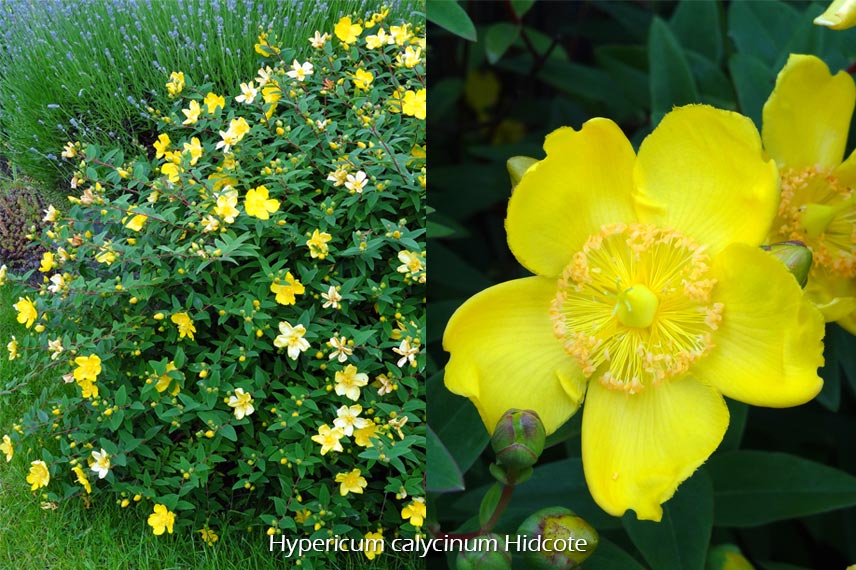
Discover our guide to learn everything about St John’s wort: “Hypericum, St John’s wort: planting, pruning and maintenance”
Chaste tree, chasteberry or Vitex
Vitex called chaste tree, pepper tree or chaste lamb is a Mediterranean plant hardy in well-drained soil. This bush with summer flowering produces clusters of abundant, melliferous blue, mauve or white flowers that attract butterflies. Its attractive, deeply divided aromatic foliage gives off a peppery scent. Its late flowering in August–September brings colour to garden when many plants are dormant. Latifolia form is distinguished by broad foliage, large blue flowers 20–30 cm long and is more vigorous. ‘Albus’ is a variety with pretty white flowers in spikes 15–20 cm long. Vitex flowering ranks among garden’s most beautiful blues. Recent varieties, very floriferous from July such as ‘Delta Blues’ with elegant habit and naturally well-ramified growth or ‘Blue Puffball’ which forms a very distinctive compact ball, are equally remarkable.
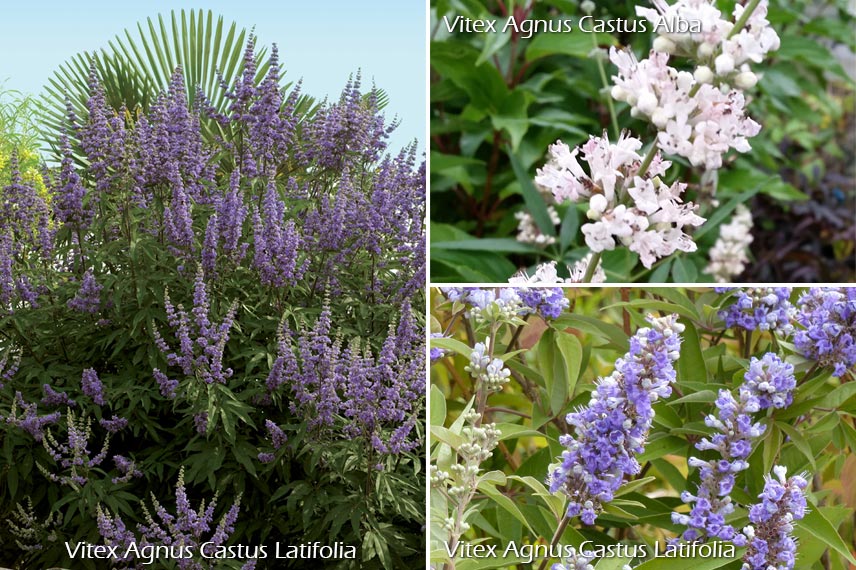
Discover dedicated file: “Vitex agnus-castus, chaste tree: to plant, to grow, to prune”
Lavender
Valued for abundant summer flowering in spikes — blue, violet, white or pink — and for its Mediterranean-scented fragrance, Lavender is an indispensable bush for summer displays. It copes well with cold and requires very free-draining soil, which will enhance its hardiness. Among lavandins (Lavandula x intermedia), ‘Grosso’ is a reliable choice, floriferous and hardy. True lavender (Lavandula angustifolia) is more compact and its aroma is subtler; ‘Hidcote’ is a floriferous, well-formed variety that looks good all year round. ‘Rosea’ is distinguished from classic lavender blue by its pink flowers. All thrive in containers, rockeries, embankments, borders, beds or low hedges.

Discover our complete guide: “Lavender: planting, growing, pruning”.
Lavatera
Lavatera offers very generous, long-lasting flowering in summer, often from June to October. It tolerates poor, dry soils and prefers well-drained soil where it copes better with wet winters. Its lifespan is fairly short, around 4 to 5 years, but flowering is almost continuous until the frosts and it is easily propagated from cuttings. ‘Blushing Bride’ or ‘blushing bride’ displays white then pink flowers while ‘Candy Floss’ shows soft-pink flowers throughout summer. ‘Burgundy Wine’ is a delicate purplish-pink. Plant Lavateras as solitary specimens, in mixed borders, by the patio, as a flowering hedge or in containers.
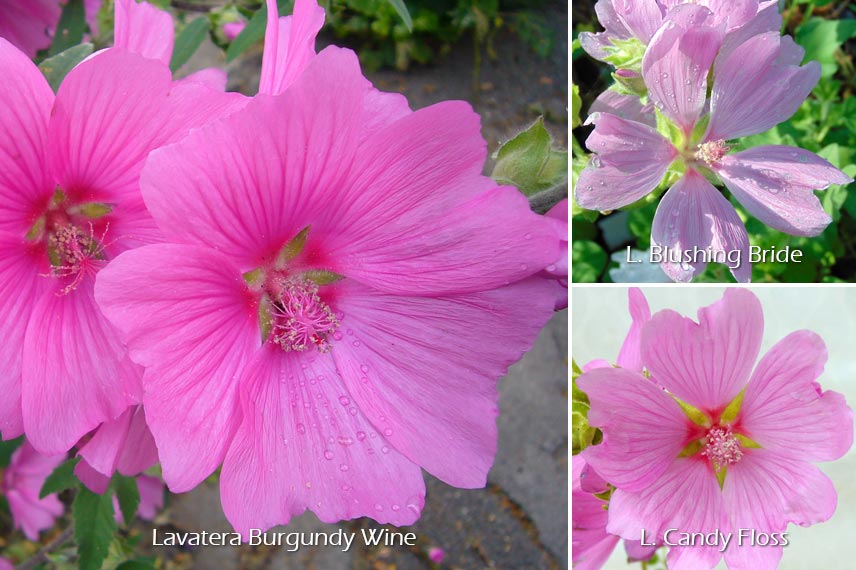
Discover the dossier dedicated to them: “Lavateras: planting, pruning and maintenance”
Perovskia or Afghan sage
Afghan sage, also called Siberian sage or Perovskia is a flowering bush with aromatic, dissected foliage and very light blue flowering all summer, from July to September. Very drought-resistant, it requires a south-facing, warm and sunny exposure and a free-draining soil (in heavy soil, add sand and gravel). With its luminous lavender-blue flowers and its versatile pruning, ‘Blue Spire’ is essential in a dry garden without watering. ‘Little Spire’ shows a more restrained growth and a more compact habit. These sages slip lightly into naturalistic scenes, large borders and arid rockeries, into a large bed of perennials, or as a low hedge. You can also grow the small compact varieties (‘Lacey Blue’) in pots to brighten sunny balconies and terraces.
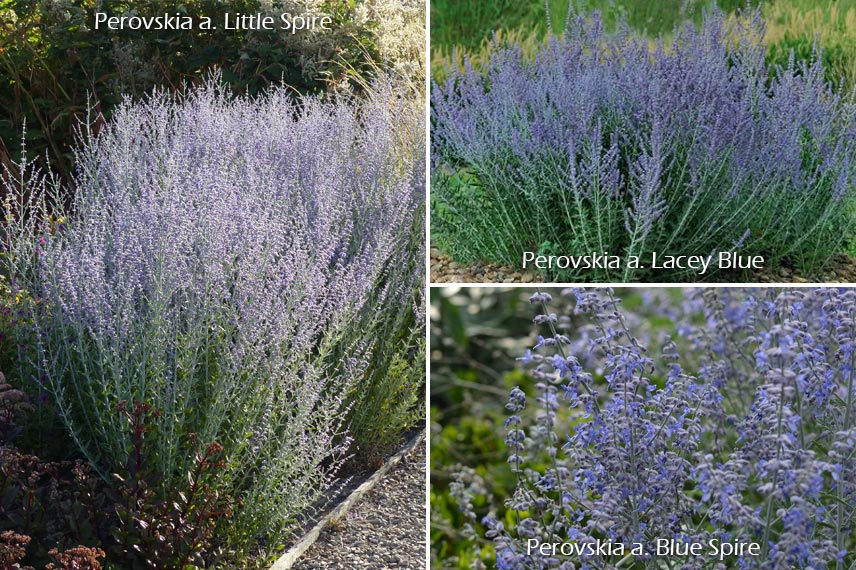
Discover the full guide dedicated to it: “Perovskia: planting, pruning and maintenance”
Shrubby sage, Salvia
Shrubby sages are extremely floriferous from March–April, rebloom in spells in summer, then flower abundantly from late summer until the frosts. They are easy to grow in well-draining, even dry, soil, in a warm, sheltered position protected from northerly winds and draughts. Semi-hardy, they acclimatise well to a sunny exposure. Their aromatic foliage is semi-evergreen. There are many varieties. Salvia grahamii is the shrubby sage par excellence, with flowers an almost crimson-pink. ‘Hot Lips’ is magnificent with its bicoloured red and white flowers, while ‘Royal Bumble’ produces a scarlet, velvety display. ‘Melen’ is a cultivar with pale yellow flowers enclosed in an almost black calyx. ‘Blue Note’ forms a lovely compact clump with royal blue flowers. Use them in pots or in a dry flowering meadow, in a scree garden, a rockery, at the front of a bed or as a border near the patio.
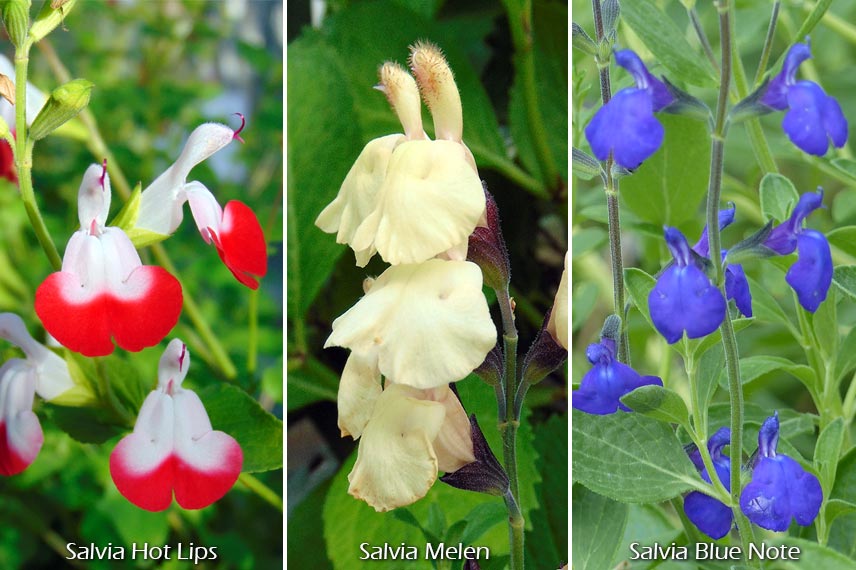
Discover our dossier: “Sages: planting, pruning and maintenance”
- Subscribe!
- Contents
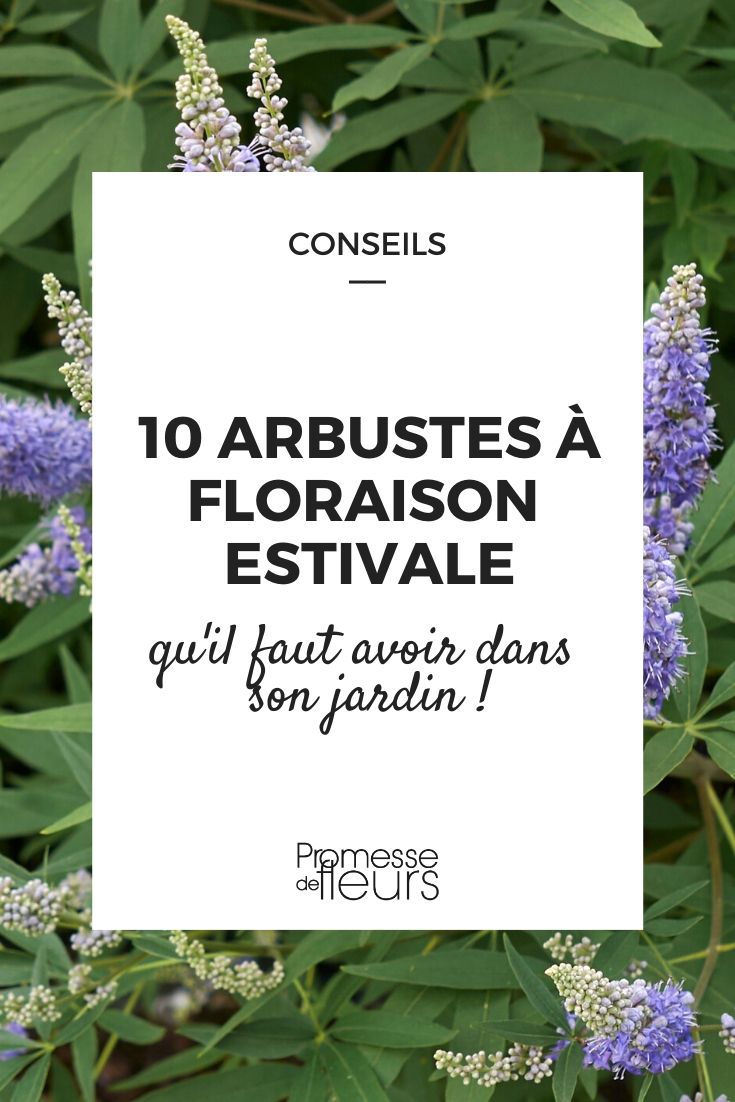































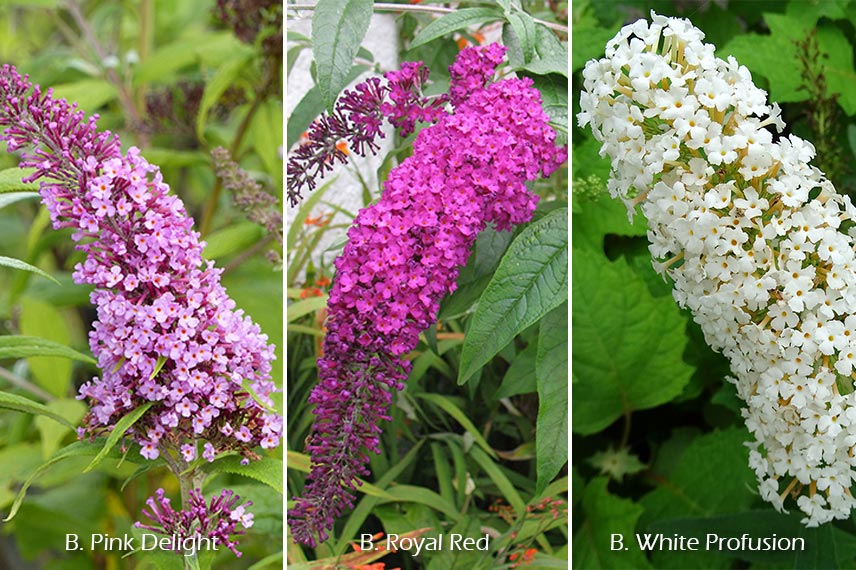


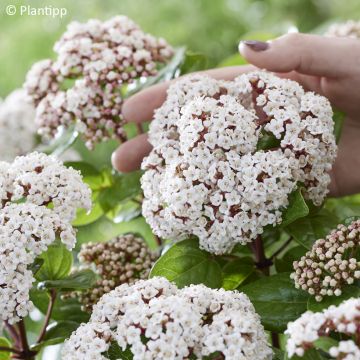
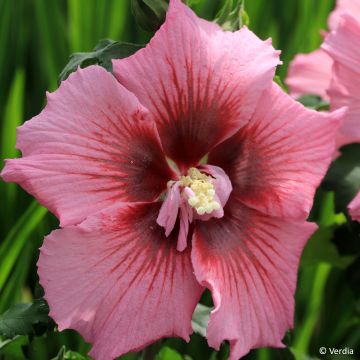
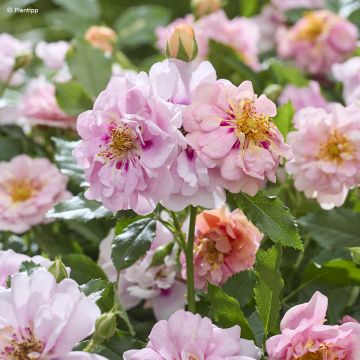
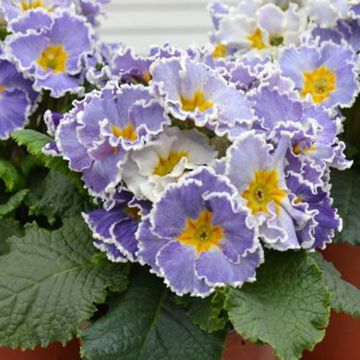

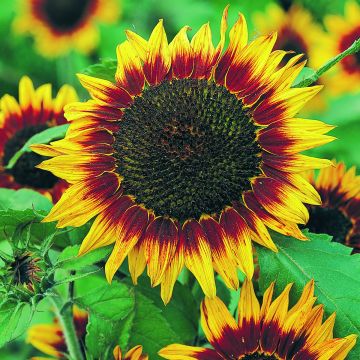
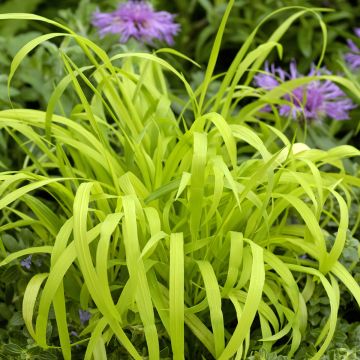
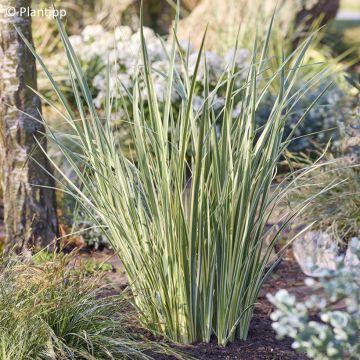
Comments